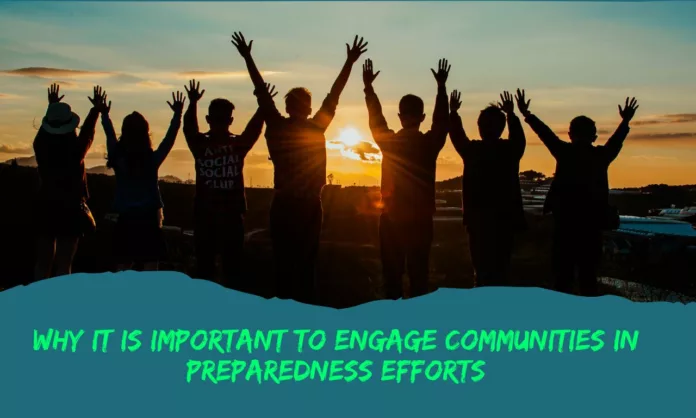In today’s fast-paced and interconnected world, the need for community preparedness has never been greater. From natural disasters to public health emergencies, communities face a wide range of threats that require proactive planning and coordinated responses. Engaging communities in preparedness efforts is vital to building resilience, enhancing response capabilities, and fostering a sense of collective responsibility. In this article, we will explore the reasons why community engagement is crucial in preparedness efforts.
Table of Contents
Local Knowledge and Expertise
Communities possess invaluable local knowledge and expertise that can significantly contribute to effective preparedness. Local residents have firsthand information about their neighborhoods, infrastructure, and vulnerable populations. By involving the community, emergency management officials can tap into this valuable knowledge to identify potential risks, develop appropriate response plans, and allocate resources efficiently. Community members can provide insights into specific challenges and suggest solutions that might be overlooked by external authorities.
Empowerment and Ownership
Engaging communities in preparedness efforts empower individuals and fosters a sense of ownership over their safety and well-being. When community members actively participate in planning and decision-making processes, they become invested in the outcomes. This sense of ownership motivates individuals to take proactive measures to protect themselves, their families, and their neighbors. It promotes a culture of preparedness, where community members are more likely to adopt emergency plans, practice drills, and acquire necessary supplies. By involving the community, preparedness efforts become a shared responsibility, strengthening overall resilience.
Effective Communication and Trust
Community engagement plays a vital role in establishing effective communication channels between emergency management agencies and the public. By establishing trust and transparency, officials can effectively disseminate critical information, instructions, and warnings during emergencies. Community leaders and local organizations can serve as trusted intermediaries, ensuring that accurate information reaches all segments of the population, including those with language or accessibility barriers. This two-way communication fosters a sense of confidence and encourages active participation, leading to a more coordinated and informed response.
Targeted Vulnerability Reduction
Different communities have unique vulnerabilities based on their geographical location, socio-economic factors, and demographics. Engaging communities enables emergency management agencies to tailor preparedness efforts to address these specific vulnerabilities effectively. For example, in flood-prone areas, community engagement may involve educating residents on evacuation routes and providing training on flood-resistant measures. In low-income neighborhoods, efforts may focus on ensuring equal access to emergency resources and developing affordable preparedness plans. By understanding the needs and concerns of each community, preparedness efforts can be customized for maximum impact.
Collaboration and Resource Mobilization
Community engagement facilitates collaboration among various stakeholders, including government agencies, non-profit organizations, businesses, and community members themselves. Through partnerships and networks, communities can pool resources, expertise, and skills to enhance their preparedness capacities. Local businesses can contribute supplies and services, non-profit organizations can provide training and support, and community members can volunteer their time and knowledge. This collective approach strengthens community resilience and helps bridge gaps in resources that may exist at the government level.
Conclusion
Engaging communities in preparedness efforts is an essential component of building resilient societies. By harnessing local knowledge, empowering individuals, fostering trust, addressing specific vulnerabilities, and promoting collaboration, communities become better equipped to face emergencies. Preparedness efforts that involve the active participation of community members result in higher levels of readiness, faster response times, and reduced overall impacts during disasters. Ultimately, community engagement cultivates a culture of resilience where individuals, organizations, and governments work together to protect lives and safeguard communities in the face of adversity.

